ending welfare as we know it
description: a phrase popularised by Bill Clinton during his presidency, referring to welfare reform policies
42 results
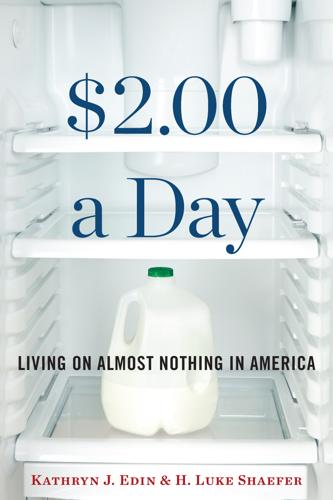
$2.00 A Day: Living on Almost Nothing in America
by
Kathryn Edin
and
H. Luke Shaefer
Published 31 Aug 2015
A skinny thirty-one-year-old with no expertise in welfare policy, but with a burning desire to win back the White House for a party that he thought had swung too far to the left, Reed saw welfare reform as a clear political winner. He went searching for the phrase that could put the issue front and center. Clinton first announced that it was time to “end welfare as we know it” in a speech at Georgetown University in October 1991. In the days before the Georgetown speech, as Reed fervently worked to flesh out what exactly this meant, he happened upon one of the papers in which Ellwood laid out his proposal. Reed seized on the only conservative tenet of Ellwood’s plan and proposed that in the Clinton program, families would get up to two years of cash aid coupled with job training and other services.
…
Were Ellwood’s own words going to be used to push families with children off the rolls and into deep poverty? Ellwood had more than once tried to clarify that he promoted time limits only in the context of an overall expansion of aid to the working poor. Bruce Reed’s feverish desire that the new president live up to his pledge to “end welfare as we know it” caused Ellwood to wonder what exactly the Clinton reform was going to look like. Still, when the call came asking him to serve in the new administration as an assistant secretary in the U.S. Department of Health and Human Services, Ellwood immediately packed his bags for Washington. Within days of arriving in the capital, he and a colleague were asked to develop a plan to expand the EITC in a big way.
…
In just a few years, the federal government would be spending many billions of dollars more on the EITC—to aid workers—than it ever had on AFDC. Making good on the promise to reform the welfare system itself was far more daunting. It quickly became apparent that the administration—and, most important, the president—didn’t have a specific plan for how to approach the issue. There was a clear charge to “end welfare as we know it,” but no one knew exactly how this campaign rhetoric was to be transformed into a concrete proposal. David Ellwood’s plan would cost a great deal more than the current system, because of its investments in education, training, and the provision of public jobs. Bruce Reed’s goal, which was more closely aligned with the language that had gotten the president elected, was to spend a great deal less on welfare, not more.
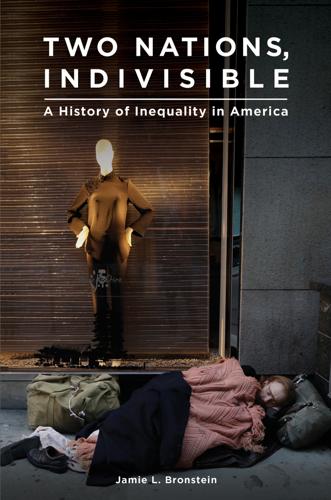
Two Nations, Indivisible: A History of Inequality in America: A History of Inequality in America
by
Jamie Bronstein
Published 29 Oct 2016
Bush was a one-term president largely because when recession struck in 1990, as the United States attempted to unseat Saddam Hussein in the first Gulf War, Bush had to renege on his campaign promise not to raise taxes.39 Bush’s response to the recession and deficit was, among other things, to raise the marginal tax rate on the top tax bracket to 31 percent from 28 percent—still far below what it had been prior to Reagan. But only 16 percent of Americans surveyed professed to approve of the way in which he handled the economy.40 By 1992, neoliberalism had infected both political parties. Bill Clinton, although a Democrat, promised during his presidential campaign to “end welfare as we know it.”41 Clinton’s plan, outlined in Putting People First, sought to craft a “third way.” He triangulated between liberal welfarism of the kind pursued by Johnson and Roosevelt, and the hard line that Ronald Reagan had sought but was never able to obtain due to a Democratic House of Representatives through his eight-year administration.
…
Michael Comiskey, “The Promise and Performance of Reaganomics,” Polity vol. 20 no. 2 (1987): 316–331. 38. George G. Graham, “WIC: A Food Program that Fails,” The Public Interest vol. 103 (1991): 66–75, at 71. 39. Prasad, “The Reagan Tax Cut of 1981,” at 374. 40. Dolan, “In His Shadow,” 242. 41. Martin Carcasson, “ ‘Ending Welfare as We Know It’: President Clinton and the Rhetorical Transformation of Welfare Culture,”Rhetoric and Public Affairs vol. 9 no. 4 (2006): 655–692. 42. Brendan O’Connor, “Policies, Principles, and Polls: Bill Clinton’s Third Way Welfare Policies, 1992–1996,” Australian Journal of Politics and History vol. 48 no. 13 (2002): 396–411, at 406. 43.
…
Crafton, “The Incremental Revolution: Ronald Reagan and Welfare Reform in the 1970s,” Journal of Policy History vol. 26 no. 1 (January 2014): 27–47, at 41. 45. Melinda Cooper, “Workfare, Familyfare, Godfare: Transforming Contingency into Necessity,” The South Atlantic Quarterly vol. 111 no. 4 (2012) 643–661; Matthewson and Arsenault, “Conservatives, Federalism and the Defense of Inequality,” 344. 46. Demetrios James Caraley, “Ending Welfare as We Know It: A Reform Still in Progress,” Political Science Quarterly vol. 116 no. 4 (2001–2002): 525–559. 47. Jounghee Kim, “Welfare Reform and College Enrollment among Single Mothers,” Social Science Review vol. 86 no. 1 (March 2012): 69–91, at 70. 48. Deborah Roempke Graefe and Daniel T. Lichter, “Marriage Patterns among Unwed Mothers: Before and After PRWORA,” Journal of Policy Analysis and Management vol. 27 no. 3 (2008): 479–497. 49.
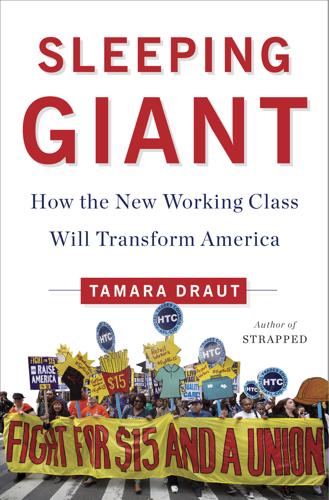
Sleeping Giant: How the New Working Class Will Transform America
by
Tamara Draut
Published 4 Apr 2016
Just over half of the most secure Americans agree with the statement “Poor people today have it easy because they can get government benefits without doing anything in return,” while two-thirds of the least secure Americans agree instead that “poor people have hard lives because government benefits don’t go far enough to help them live decently.” Keep in mind that in 2013 just twenty-six out of every one hundred poor families received Temporary Assistance for Needy Families, down from sixty-eight families for every one hundred in poverty in 1996, the year that President Bill Clinton “ended welfare as we know it.”3 This polarization by class extends to views about business, with two-thirds of the least secure Americans believing that corporations make too much profit, while less than half of the well-off believe that to be the case. What the Pew analysis shows is that on pocketbook issues, the new working class desires more action from government to improve their lives while the affluent exhibit very little support for such action.
…
The Republicans largely made that fear a reality. In the decades that followed, starting with President Nixon and his championing of “states’ rights” and moving on to President Reagan’s “welfare queens,” the first President Bush’s demonizing of Willie Horton, and President Clinton’s calculated “Sister Souljah moment” and pledge to “end welfare as we know it,” white political candidates have effectively used coded racial language to court the white vote and provoke antigovernment sentiment.26 In a shockingly honest admission, Lee Atwater, a leading political strategist and adviser to the Republican party, explained the southern strategy during an anonymous interview with political scientist Alexander P.
…
Today almost one in twelve black men is behind bars, a staggering loss to families, neighborhoods, and society.52 And for the partners and wives left behind, most of whom are working-class, the challenges of making enough money to get ahead have only intensified with the rise of the bargain-basement economy. Nearly half of all child-care and home care workers have to supplement the incomes they earn from their jobs with public assistance.53 These are the “welfare queens” that Reagan was so fond of demonizing and that President Bill Clinton called to mind in his successful effort to “end welfare as we know it.” Today young activists like Patrisse Cullors and thousands of others are fueling a new civil rights movement that brings together economic, social, and racial justice, which I cover in more detail in Chapter 7. In working-class black neighborhoods, as in Ferguson, Baltimore, Staten Island, the Bronx, and Cleveland, this new generation is connecting the issues of joblessness, police brutality, and the prison industrial complex.

Give People Money
by
Annie Lowrey
Published 10 Jul 2018
Johnson, “Annual Message to the Congress on the State of the Union,” Jan. 8, 1964. Online by Gerhard Peters and John T. Woolley, The American Presidency Project, http://www.presidency.ucsb.edu/ws/?pid=26787. “ending welfare as we know it”: The Clinton/Gore 1992 Committee, “The Clinton Plan: Welfare to Work” (1992), https://www.washingtonpost.com/video/politics/bill-clinton-in-1992-ad-a-plan-to-end-welfare-as-we-know-it/2016/08/30/9e6350f8-6ee0-11e6-993f-73c693a89820_video.html. dramatically reduced deprivation: Gary V. Engelhardt and Jonathan Gruber, “Social Security and the Evolution of Elderly Poverty” (NBER Working Paper no. 10466, May 2004).
…
Later advances sought to boost the earnings of the working poor, with Gerald Ford passing the EITC and Ronald Reagan expanding it. Bill Clinton reformed the New Deal–era welfare program, once aimed at widows and their children, but by the 1990s primarily used by unmarried mothers. He campaigned on “ending welfare as we know it,” twice vetoing Republican reform proposals for being too punitive but eventually signing a 1996 law that put a lifetime cap on benefits and required recipients to find a job. Finally, Barack Obama attempted to pass a rare universal program, if a means-tested one, with his health care law.

Poverty for Profit
by
Anne Kim
Bush, continued the GOP streak, trouncing former Massachusetts governor Michael Dukakis with an Electoral College vote of 426 to 111.64 While Dukakis’s disastrous campaign might best be remembered for his infamous photo op atop an M-l Abrams tank, Bush also successfully capitalized on antigovernment sentiment, labeling Dukakis a “Massachusetts liberal” who favored high taxes and big government.65 Clinton, who was serving as governor of Arkansas when he decided to run for president, refurbished the Democratic Party’s image. Working with the Democratic Leadership Council, a coalition of moderate and conservative, mostly southern, Democrats, Clinton ran as a fiscally conservative “New Democrat” who pledged to balance the budget, get tough on crime, and to “end welfare as we know it.”66 His goal was to win back the centrists and “Reagan Democrats” who had defected to the GOP and to rebuild a Democratic center-left coalition that could break Republicans’ electoral dominance. He co-opted Republican talking points on welfare reform and taxes while still seeking progressive goals—a “third way” strategy that Democratic consultant Dick Morris would later famously call (and critics would later deride as) “triangulation.”67 Clinton also adopted Reagan’s critique of government, in repudiation of perceived big-government apologists like Carter, Mondale, and Dukakis.
…
Most significantly, the bill proposed to end welfare as an entitlement, instead converting the program into the fixed, lump-sum “block grants” to states that TANF is today.141 Clinton had already vetoed two GOP reform efforts as too punitive, but the results of the 1994 election shifted political momentum in the GOP’s favor.142 By then, Clinton’s failure to pass welfare reform—despite his pledge in 1992 to “end welfare as we know it”—also threatened to become a problem for his re-election campaign.143 Unwilling to risk the political fallout from a third veto, Clinton signed PRWORA on August 22, 1996, despite acknowledging the legislation had “serious flaws.”144 (He reportedly described the measure as “a decent welfare bill wrapped in a sack of s—t,” according to Time.)145 Unfortunately, the bipartisan imprimatur Clinton bestowed on welfare reform has since calcified the politics of poverty.
…
Erin Blakemore, “How the Willie Horton Ad Played on Racism and Fear,” History.com, November 2, 2019, https://www.history.com/news/george-bush-willie-horton-racist-ad. 66. Mitchell Locin, “Clinton Says He’s a ‘New Democrat,’” Chicago Tribune, October 22, 1922; “Bill Clinton in 1992 ad: ‘A Plan to End Welfare as We Know It,” Washington Post, August 30, 2016. 67. In a 2000 interview with Frontline, Morris invoked the Hegelian dialectic to describe triangulation: “What you should do is really take the best from each party’s agenda, and come to a solution somewhere above the positions of each party. So from the left, take the idea that we need day care and food supplements for people on welfare.
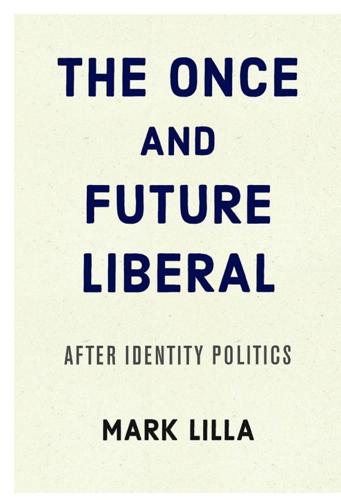
The Once and Future Liberal: After Identity Politics
by
Mark Lilla
Published 14 Aug 2017
The moment Bill Clinton was elected president, the conservative movement fell into a fit of hysteria reminiscent of the 1950s and which has yet to pass. It didn’t matter that Clinton had fought to move the Democratic Party to the center, that with regard to economics and foreign policy he was a realist, that he had declared that “the era of big government was over” and called to “end welfare as we know it.” Congressional Republicans wanted to stymie him no matter what it took. They shut down the government just because, and impeached Clinton for a peccadillo. Unlike Ronald Reagan, they became absolutists on tax cuts, gun control, and abortion, and purged from their ranks any who dared dissent.
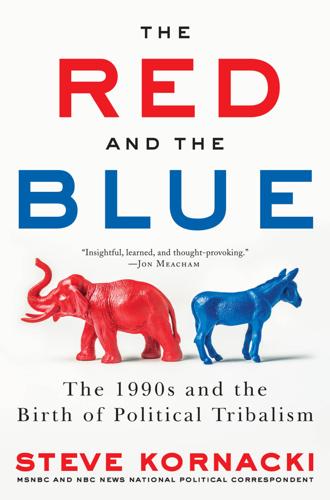
The Red and the Blue: The 1990s and the Birth of Political Tribalism
by
Steve Kornacki
Published 1 Oct 2018
This wasn’t the grand unveiling of a universal health-care plan, just a reminder from the president that one would be coming after he heard back from the task force he had just appointed, one that was being chaired, in a historic arrangement, by the First Lady. There were offerings for the DLC crowd, too—talk of national service, community banking, and small-business loans, plus a vow that “later this year we will offer a plan to end welfare as we know it.” The opposition party was ready to accuse him of taxing too much and cutting too little. To head them off, Clinton committed himself to eliminate one hundred thousand jobs from the federal bureaucracy during his term and to cut one-quarter of his own White House’s staff. With the Cold War over, the Pentagon would get a haircut, too, he said, but so would a host of domestic programs and agencies—a total of $246 billion in savings, he claimed.
…
Two versions of the bill had reached Clinton’s desk, and he’d vetoed both of them, but when congressional Republicans took their third pass that summer, Clinton reconsidered. He was on record objecting to many provisions, but he was also on record—dating back to his 1992 campaign—with that promise to “end welfare as we know it.” On so many issues, he had turned the tables on the Republicans since the revolution, and he was running well ahead of Dole. But welfare was different. Unlike Medicare, it was not a universally beloved program; in fact, the public was strongly on the side of changing it in major ways. There were voices telling Clinton not to worry—that he was strong enough politically to take any heat that would come with another veto.
…
Why risk giving Dole any kind of an opening now? On July 31, he announced that he would sign it, even though it had “serious flaws.” He promised to fight for changes after it was enacted and argued that the opportunity was too rare to miss. “This is the best chance we will have for a long time to complete the work of ending welfare as we know it.” Thirty Democrats in the House voted for it and twenty-three in the Senate, while practically every Republican voted yes, and on August 22, Clinton followed through and made it law. Denunciations from Clinton’s own party had been loud. John Lewis called it “mean.” Senator Paul Wellstone, a liberal from Minnesota, said it would “create more poverty and hunger among children in America.”
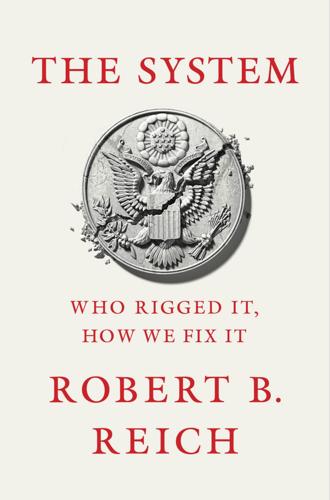
The System: Who Rigged It, How We Fix It
by
Robert B. Reich
Published 24 Mar 2020
Bush’s use of Willie Horton—a black convicted felon who while on a weekend furlough committed assault and rape—to whip up white fears that Bush’s opponent, Michael Dukakis, the governor of Massachusetts, where Horton had been incarcerated, would release other black convicts. Racism was also behind Bill Clinton’s promise to “end welfare as we know it” and to “crack down on crime.” All were illustrations of what Berkeley professor Ian Haney López has called dog-whistle politics—the use of racially coded language to exploit the prejudices of white Americans. What gave Trump’s racism—as well as his hateful xenophobia, misogyny, and jingoism—particular virulence was his capacity to channel the intensifying anger of the white working class into it.
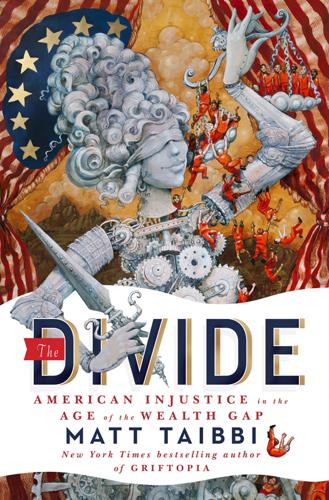
The Divide: American Injustice in the Age of the Wealth Gap
by
Matt Taibbi
Published 8 Apr 2014
It’s not a coincidence that radical welfare reform took place on the same watch that also saw a radical deregulation of the financial services industry. Clinton was a man born with a keen nose for two things: women with low self-esteem and political opportunity. When he was in the middle of a tough primary fight in 1992 and came out with a speech promising to “end welfare as we know it,” he could immediately smell the political possibilities, and it wasn’t long before this was a major plank in his convention speech (and soon in his first State of the Union address). Clinton understood that putting the Democrats back in the business of banging on black dependency would allow his party to reseize the political middle that Democrats had lost when Lyndon Johnson threw the weight of the White House behind the civil rights effort and the War on Poverty.
…
Clinton understood that putting the Democrats back in the business of banging on black dependency would allow his party to reseize the political middle that Democrats had lost when Lyndon Johnson threw the weight of the White House behind the civil rights effort and the War on Poverty. If you dig deeply enough in America, the big political swings always have something to do with race. And Clinton’s vacillating but cleverly packaged campaign to “end welfare as we know it” was a brilliant ploy by the man Toni Morrison called the “first black president” to take back the southern white voters the Democrats had seemingly lost forever when they sent the FBI into Alabama and Mississippi in the 1960s. That, and a little rolled-up-newspaper training session with rapper Sister Souljah, allowed Clinton to take four of the eleven Confederate states, seizing ground no Democrat had won for more than two decades.

Make Your Own Job: How the Entrepreneurial Work Ethic Exhausted America
by
Erik Baker
Published 13 Jan 2025
In Yunus’s view, being on welfare made you “a virtual prisoner not only of poverty but of those who would help you: you earn a dollar, this income has to be reported to the welfare authority,” who would “deduct this dollar from your welfare cheque.”60 In fact, Clinton often framed his efforts as president to “end welfare as we know it” as the reverse image of his microfinance boosterism. At his presentation of the first annual Presidential Awards for Excellence in Microenterprise Development at the White House in 1997, Clinton announced a set of new “welfare-to-work” public-private partnerships, suggesting how closely the two issues were tied together in his mind. In an online report issued at the close of his time in office, Clinton’s White House bragged that by “ending welfare as we know it” with the 1996 termination of Aid to Families with Dependent Children, the administration was responsible for “Connecting Small Businesses with New Workers and Creating New Entrepreneurs.”
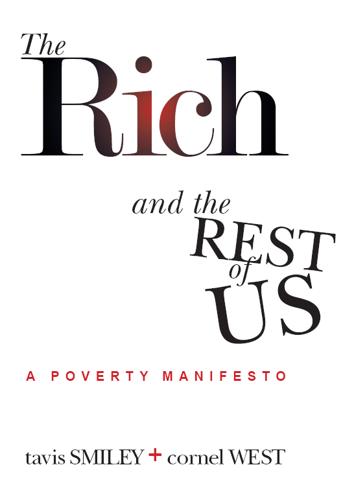
The Rich and the Rest of Us
by
Tavis Smiley
Published 15 Feb 2012
If they don’t get their stuff, it ain’t gonna be about love; it’s gonna be revenge and hatred. We all gonna go under if the poor people and the working people aren’t given their dignity now.”43 We’d like to remind our dear, dear brother Rush Limbaugh of Gandhi’s words, “Poverty is the worst form of violence.” A DAY IN THE LIFE With a pledge to “end welfare as we know it,” former President Bill Clinton disappointed many, including us, by signing the Personal Responsibility and Work Opportunity Reconciliation Act in 1996. The ballyhooed welfare reform bill, which was really just a page out of the Republicans’ “Contract With America” playbook, was Clinton’s calculated compromise with the Republican-controlled Congress that, at the time, wanted to drastically overhaul, if not eliminate, the traditional welfare system.44 AFDC was replaced with TANF, or Temporary Assistance for Needy Families, a cumbersome bureaucratic system that prohibited unconditional entitlement and mandated time limits in which recipients must seek work.

A Generation of Sociopaths: How the Baby Boomers Betrayed America
by
Bruce Cannon Gibney
Published 7 Mar 2017
Equal time in the Oval Office doesn’t matter so much as the actual policies pursued in that office, because the net drift Rightward in the white Boomer electorate has freed conservative politicians to move further to the Right while politicians on the Left have also moved Rightward to remain viable. Except on certain social matters, Obama was far more conservative than Richard Nixon, for example, and this has been the Democratic story since Boomers started voting en masse. The initial deregulatory impulse began under Carter, not Reagan; it was Clinton, not Bush I, who promised to “end welfare as we know it” and declared that the “era of big government is over”; it was Obama who made most of the Bush tax cuts permanent, and so on. But there have also been some odd spectacles on the Right: the provision of prescription drug benefits to seniors under Bush II (Medicare Part D; apparently the era of big government was not quite over), and substantial increases to Medicare and Social Security taxes under Reagan and that president’s decidedly statist salvation of the savings and loan industry.
…
Social Security also delivers substantial assistance to the disabled and to children, if a working parent suffers disability or death. These programs are less fraught than programs for seniors and we can leave them to the specialists. Only one fact need detain us. In 1992, Bill Clinton campaigned to “end welfare as we know it.” Doing so required gutting Aid to Families with Dependent Children (AFDC), a creation of the Social Security laws. In 1996, Clinton succeeded in replacing AFDC with something much less generous. (Therefore, when Boomers argue that Social Security is “untouchable” and an inviolable social bond, they forget their own record.)
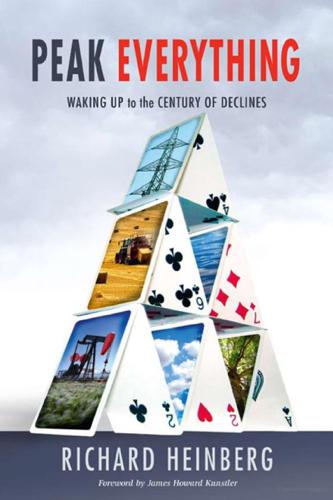
Peak Everything: Waking Up to the Century of Declines
by
Richard Heinberg
and
James Howard (frw) Kunstler
Published 1 Sep 2007
And so, taking into account the inevitable, now-commencing winding down of that brief, incomparably opulent fossil-fuel fiesta, it may be better to say that Malthus wasn’t wrong, he was just ahead of his time. But if the depletion of fossil fuels proves Malthus to have been ultimately correct in his forecast of human die-off, what would that say for the rest of his message — his calls to abolish the Poor Laws and thus, in Bill Clinton’s famous locution, “end welfare as we know it,” and his implicit view that the “perfectibility of society will always be out of reach”? William Stanton is a retired geologist and contemporary author who has taken up Malthus’s mantle in a well-researched but grim and controversial book, The Rapid Growth of Human Populations, 1750-2000.

Slouching Towards Utopia: An Economic History of the Twentieth Century
by
J. Bradford Delong
Published 6 Apr 2020
It was not Ronald Reagan but Bill Clinton who announced, in one of his State of the Union speeches, that “the era of big government is over.”20 It was not Margaret Thatcher but Barack Obama who called for austerity when the unemployment rate was above 9 percent: “Families across the country are tightening their belts and making tough decisions,” he said. “The federal government should do the same.”21 It was Bill Clinton who made his major social-insurance commitment one to “end welfare as we know it.”22 It was Prime Minister Tony Blair, from the Labour Party, who validated Margaret Thatcher’s strong allergy to British Labour’s union-centered cultural politics.23 In the United States, Democrats and Republicans fenced over what form partial Social Security privatization would take—Would your private plan be an add-on or a carve-out?
…
Barack Obama, “Address Before a Joint Session of the Congress on the State of the Union,” January 27, 2010, American Presidency Project, University of California, Santa Barbara, www.presidency.ucsb.edu/documents/address-before-joint-session-the-congress-the-state-the-union-17. 22. Martín Carcasson, “Ending Welfare as We Know It: President Clinton and the Rhetorical Transformation of the Anti-Welfare Culture,” Rhetoric and Public Affairs 9, no. 4 (Winter 2006): 655–692. 23. Alwyn W. Turner, A Classless Society: Britain in the 1990s, London: Aurum Press, 2013. 24. J. Bradford DeLong, “Private Accounts: Add-on, Not Carve-Out,” Grasping Reality, May 3, 2005, https://delong.typepad.com/sdj/2005/05/private_account.html. 25.
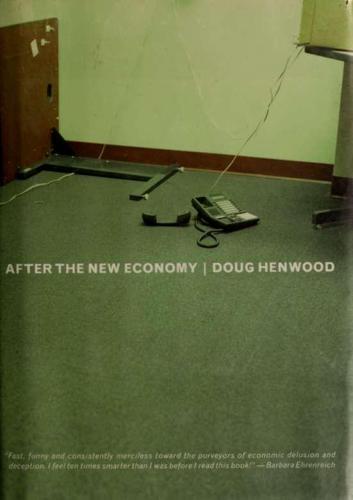
After the New Economy: The Binge . . . And the Hangover That Won't Go Away
by
Doug Henwood
Published 9 May 2005
Most centrists and Hberals found his 1981 book Wealth and Poverty, with its argument that the poor are spoiled by a generous welfare state (as if the U.S. ever had one of those) and instead need the spur of their poverty, rather implausibly brutal; just a decade later. Bill CHnton won the presidency in part on a promise to "end welfare as we know it," and just a few years later, he signed a bill that did exactly that.^ And Gilder's late-1980s New Economy claims seemed loopy when he first issued them; less than a decade later, they were painfully ubiquitous. Back in the summer of 1987, when the Eighties were at their Roar-ingest, an interview with George Gilder ran on the now-departed Financial News Network.
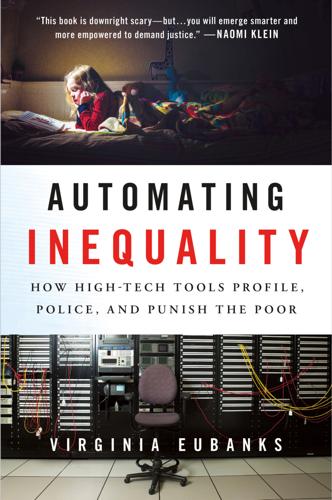
Automating Inequality
by
Virginia Eubanks
Almost 8.5 million people were removed from the welfare rolls between 1996 and 2006. In 2014, fewer adults were being served by cash assistance than in 1962. In 1973, four of five poor children were receiving benefits from AFDC. Today, TANF serves fewer than one in five of them. But the process of winnowing the rolls began long before Bill Clinton promised to “end welfare as we know it.” More aggressive investigation and increasingly precise tracking technologies provided raw material for apocryphal stories about widespread corruption and fraud. These stories birthed more punitive rules and draconian penalties, which in turn required an explosion of data-based technologies to monitor compliance.
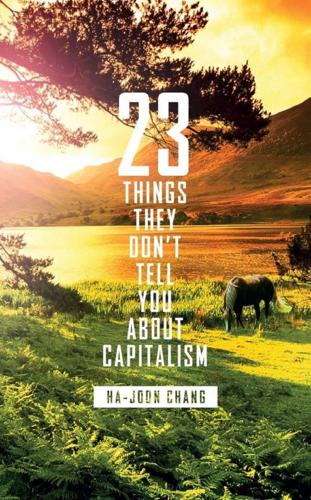
23 Things They Don't Tell You About Capitalism
by
Ha-Joon Chang
Published 1 Jan 2010
Since the 1980s, in many (although not all) of these countries, governments that espouse upward income redistribution have ruled most of the time. Even some so-called left-wing parties, such as Britain’s New Labour under Tony Blair and the American Democratic Party under Bill Clinton, openly advocated such a strategy – the high point being Bill Clinton introducing his welfare reform in 1996, declaring that he wanted to ‘end welfare as we know it’. In the event, trimming the welfare state down proved more difficult than initially thought (see Thing 21). However, its growth has been moderated, despite the structural pressure for greater welfare spending due to the ageing of the population, which increases the need for pensions, disability allowances, healthcare and other spending directed to the elderly.
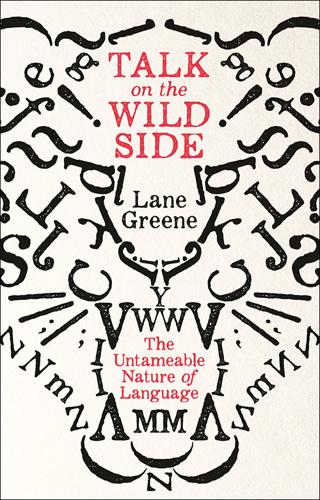
Talk on the Wild Side
by
Lane Greene
Published 15 Dec 2018
But the battle lines were drawn: “welfare” was no longer “well-being”, or even “assistance for the needy”. It was a hand-out to the undeserving, even to fraudsters and cheats. Or it was a term of abuse cynically manipulated by racist conservatives. Whatever it was, it was politically radioactive. By 1992, Bill Clinton, a Democrat, was campaigning to “end welfare as we know it”. He would win that year’s election, and ultimately sign a bill that proponents called welfare “reform”, but which Ted Kennedy, a left-wing icon and senator, called “legislative child abuse”. “Welfare” benefits were cut back and time-limited. Today, in another round of the never-ending rebranding, welfare payments are known in America as “Temporary Assistance to Needy Families”, commonly called TANF, so that one needn’t even say the word “needy”.
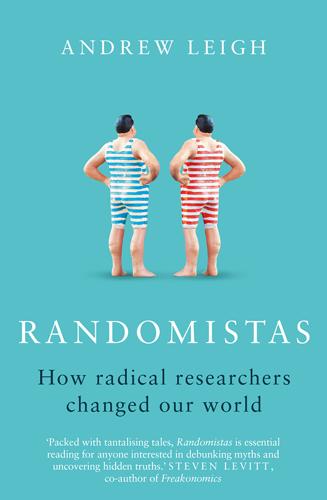
Randomistas: How Radical Researchers Changed Our World
by
Andrew Leigh
Published 14 Sep 2018
Ronald Reagan had told his campaign rallies the story of a ‘Cadillac-driving welfare queen’: an African-American woman who defrauded the welfare system.21 Critics claimed that forcing welfare recipients into low-paid jobs was ‘modern-day slavery’. Bill Clinton ran for president on a pledge to ‘end welfare as we know it’. The debate over income support was fuelled by ideology on both sides. And then there was MDRC. Read the newspapers of the era, and you come across prudent comments from Gueron: ‘We should be cautious about what we’ve got here’, ‘We haven’t found the pink pill’, it’s not a ‘quick fix for poverty’.22 Even when social programs paid for themselves, her praise was measured.

The Corruption of Capitalism: Why Rentiers Thrive and Work Does Not Pay
by
Guy Standing
Published 13 Jul 2016
In the USA, Bill Clinton’s Third Way variant also opted for flexible labour markets that promised growing inequality and insecurity. The defining moment came in 1996 when he signed the Personal Responsibility and Work Opportunity Reconciliation Act to fulfil his 1992 campaign pledge to ‘end welfare as we know it’. Drawn up by Republicans in Congress, the Act was based on welfare reforms introduced in Wisconsin by its Republican governor and was profoundly regressive, introducing time limits for entitlement to benefits and extending workfare – forcing people into poverty-wage jobs. Meanwhile, Robert Rubin, Clinton’s Treasury Secretary, was placating the bankers and setting up mechanisms that were to lead to the sub-prime crisis.
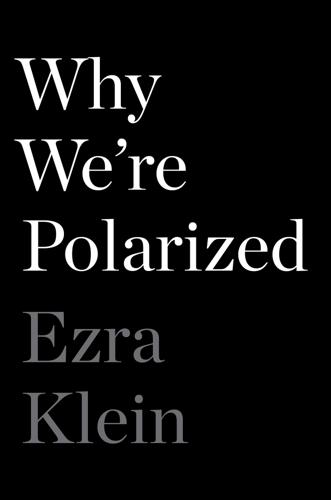
Why We're Polarized
by
Ezra Klein
Published 28 Jan 2020
From a political identity perspective, Clinton was a candidate designed to cross-pressure the electorate: he was a Democrat who could appeal to Democrats through party and some policy and appeal to non-Democrats through region, race, gender, and style. Clinton often made a show of challenging the party’s left wing, of signaling that he both heard and shared the qualms undecided voters had about the party’s most liberal voices and ideas. He promised to “end welfare as we know it” and said abortion “should be safe, legal, and rare.” Obama, by contrast, was a candidate for an age of identity stacking: his strength wasn’t in converting Republicans but in mobilizing Democratic constituencies to vote at unheard-of rates. When Hillary Clinton ran for president, she ran more like Obama than her husband.

Falter: Has the Human Game Begun to Play Itself Out?
by
Bill McKibben
Published 15 Apr 2019
This idea (that government was bad, and that productive individuals and their corporations needed to be freed from its clutches) changed the politics of America, changed it enough that even liberals couldn’t or wouldn’t stand up to it: Bill Clinton, swimming with this current, managed to force through Congress both NAFTA and the General Agreement on Tariffs and Trade, enshrining unrestricted global trade as the obvious goal. He also ended “welfare as we know it,” helping build the each-to-his-own-devices nation we now inhabit. This is what happens when someone manages to change the zeitgeist; this is why Rand and Reagan were so crucially important. The Koch brothers, Charles and David, are the classic exemplars of this worldview, and arguably the most powerful men in the Western world.
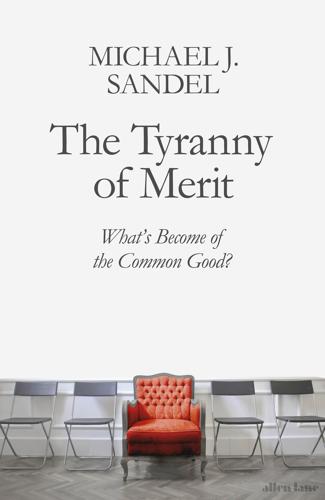
The Tyranny of Merit: What’s Become of the Common Good?
by
Michael J. Sandel
Published 9 Sep 2020
But each of his Democratic successors, Bill Clinton and Barack Obama, employed it more than twice as often as Reagan did. 6 In doing so, they, like Reagan, implicitly distinguished between the deserving and the undeserving poor. Those who struggled due to forces beyond their control were deserving of government assistance; those who were responsible for their misfortune, possibly not. In 1992, Clinton campaigned for the presidency promising to “end welfare as we know it.” As president, he connected the rhetoric of responsibility with the rhetoric of rising, evoking both the hard side and the aspirational face of meritocracy. “We must do what America does best,” he proclaimed in this first Inaugural Address. “Offer more opportunity to all and demand more responsibility from all.
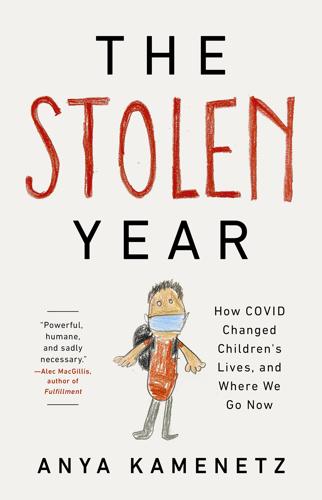
The Stolen Year
by
Anya Kamenetz
Published 23 Aug 2022
Childcare, the removal of children by the state, guaranteed adequate income, or at least some less racist, less sexist, less intrusive, more adequate form of welfare—none of these have been close to the center of the kind of feminism that gets the most media attention. We saw this disconnect in 1996, when President Bill Clinton executed his pledge to “end welfare as we know it.” At the time, 95 percent of welfare recipients were women. Gender and poverty scholar Gwendolyn Mink argued in 1998: “The Personal Responsibility Act is the most aggressive invasion of women’s rights in this century, and most women did little to resist it. Many feminists actually endorsed the new law’s core principles—mainly, that poor single mothers should move from welfare to work and into financial relationships with their children’s fathers.”
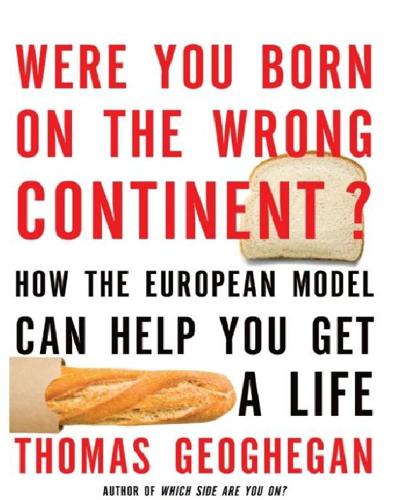
Were You Born on the Wrong Continent?
by
Thomas Geoghegan
Published 20 Sep 2011
“They elect us for nine years. And during that time, we can’t be fired.” So he told me much of what Wigand later said about the firing process, etc. He began to open up when he realized I was not an American coming to bash the German model. Remember, at this time Clinton had just signed a bill ending “welfare as we know it,” even when the only welfare we “knew” was welfare for nursing mothers, or with small little kids, and the idea of kicking these women into the workforce . . . well, it repelled a lot of people in Europe. Of course, one could think up a “politically correct” case for it, namely, that the mothers themselves were so sick, impoverished, drugged-up, physically and sexually abused, that it was better to separate them from the kids.
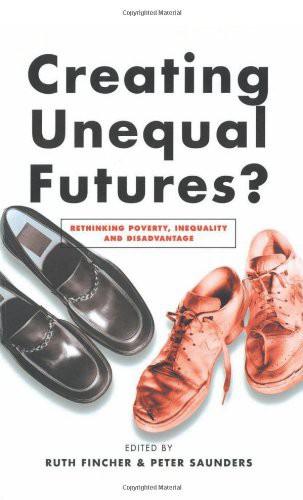
Creating Unequal Futures?: Rethinking Poverty, Inequality and Disadvantage
by
Ruth Fincher
and
Peter Saunders
Published 1 Jul 2001
From this perspective, the 40 PDF OUTPUT c: ALLEN & UNWIN r: DP2\BP4401W\MAIN p: (02) 6232 5991 f: (02) 6232 4995 36 DAGLISH STREET CURTIN ACT 2605 40 UNDERSTANDING POVERTY AND SOCIAL EXCLUSION welfare state itself is seen as the main cause of the poverty it is ostensibly designed to alleviate. Recent policy developments in the United States seem to be based on this premise. From President Clinton’s promise to ‘end welfare as we know it’ in 1992 to the Republican Personal Responsibility Act of 1996 and subsequently, the underlying premise of US reforms has been that welfare is the problem not the solution. These disparate views of the effectiveness of the welfare state have also been influential in the Australian debate.
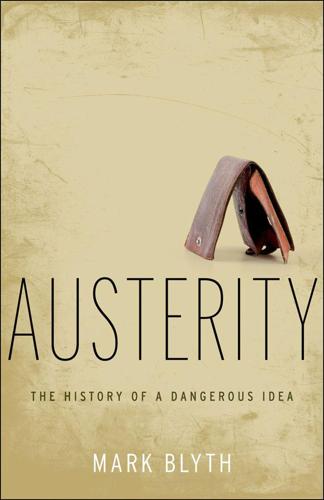
Austerity: The History of a Dangerous Idea
by
Mark Blyth
Published 24 Apr 2013
Putatively Keynesian economists, such as Larry Summers, who were part of the Obama economic team in 2008, merely continued the work of their Republican predecessors. The new team may have been intellectually more attuned to a compensatory logic by virtue of being Democrats, but it was, we should remember, the Democratic administration of Bill Clinton that had balanced the US budget and “ended welfare as we know it.” When the crisis hit, the United States may have been on the right ideologically, but it was very much on the left in terms of economic policy. Europe, in contrast, was populated by left-leaning Social Democrats and center-right Christian Democrats who had spent the previous decade building a currency union that viewed monetary stability plus strict debt and deficit controls as the only policies worth bothering about.
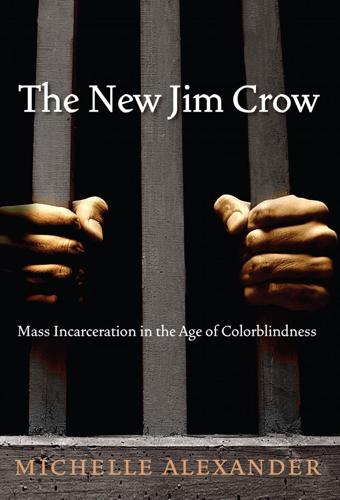
The New Jim Crow: Mass Incarceration in the Age of Colorblindness
by
Michelle Alexander
Published 24 Nov 2011
This move, like his “get tough” rhetoric and policies, was part of a grand strategy articulated by the “new Democrats” to appeal to the elusive white swing voters. In so doing, Clinton—more than any other president—created the current racial undercaste. He signed the Personal Responsibility and Work Opportunity Reconciliation Act, which “ended welfare as we know it,” and replaced it with a block grant to states called Temporary Assistance to Needy Families (TANF). TANF imposed a five-year lifetime limit on welfare assistance, as well as a permanent, lifetime ban on eligibility for welfare and food stamps for anyone convicted of a felony drug offense—including simple possession of marijuana.
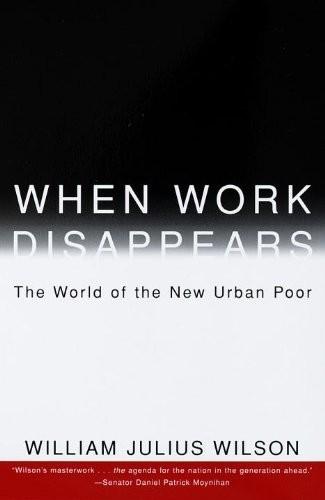
When Work Disappears: The World of the New Urban Poor
by
William Julius Wilson
Published 1 Jan 1996
Two Nations: Black and White, Separate, Hostile and Unequal. New York: Scribner’s. Hamill, Pete. 1988. “Breaking the Silence.” Esquire, March, pp. 91–102. Hamilton, Richard F. 1972. Class and Politics in the United States. New York: John Wiley. Handler, Joel F. 1972. Reforming the Poor. New York: Basic Books. ———. 1994. “ ‘Ending Welfare as We Know It’—A Wrong and Pernicious Idea.” Unpublished manuscript, UCLA Law School. Hannerz, Ulf. 1969. Soulside: Inquiries into Ghetto Culture and Community. New York: Columbia University Press. Hare, Nathan. 1969. “The Challenge of a Black Scholar.” Black Scholar 1 (December): 58–63. Harrington, Michael. 1962.
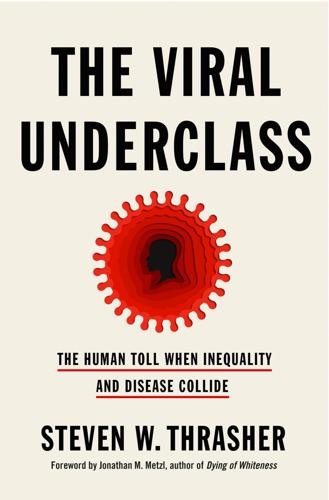
The Viral Underclass: The Human Toll When Inequality and Disease Collide
by
Steven W. Thrasher
Published 1 Aug 2022
The former bill added one hundred thousand police to America’s streets—police who would disproportionately patrol, harm, and kill Black people and, in ways direct and indirect, make Black people homeless. In an attempt to woo back “Reagan Democrats,” the latter act fulfilled Clinton’s campaign promise to “end welfare as we know it.” And in signing the welfare bill, he paved the way for states to limit access to food stamps. (People ever convicted of a felony for drugs could be banned from food assistance for life.) The bill also limited housing assistance, which might have been intended to show upper-middle-class voters that Clinton wouldn’t give handouts to people they might think of as lazy or who were unwilling to take “personal responsibility.”
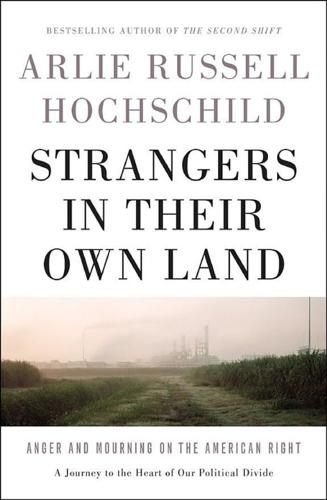
Strangers in Their Own Land: Anger and Mourning on the American Right
by
Arlie Russell Hochschild
Published 5 Sep 2016
As we shall see, the 1960s and 1970s had opened cultural doors previously closed to blacks and women, even as immigrants and refugees seemed to be sailing past the Statue of Liberty into a diminishing supply of good jobs. And the federal government was helping this happen. After Clinton’s 1990s claim to “end welfare as we know it,” rates of financial aid to the poor fell. But in response to the Great Recession, after 2008, welfare rose—mainly through Medicaid and SNAP—although these rates have peaked and are falling. (On this, see Appendix C.) Given trends in the economy and a more open cultural door, news of more “government giveaways” rang alarm bells.
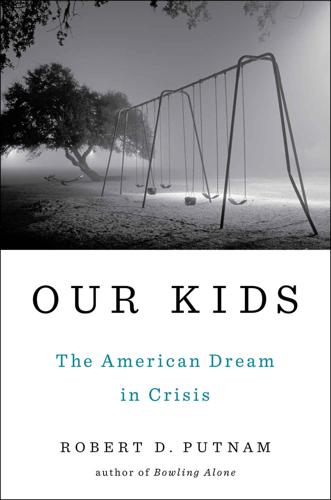
Our Kids: The American Dream in Crisis
by
Robert D. Putnam
Published 10 Mar 2015
“Marriage policy”—reducing the number of single-parent families by restoring the norm of traditional marriage—has been stressed by some conservative commentators.30 Regardless of the merits of that objective, however, the hard fact is that well-meaning policy experiments to increase the rate of stable marriage have not worked. The welfare reforms of 1996 that ended “welfare as we know it” had very little effect on the steady decline of marriage among poorer, less educated Americans. The George W. Bush administration pursued an array of policy experiments designed to enhance marriage and marital stability and rigorously evaluated the results. Among them, the Building Strong Families initiative provided relationship skill training and other services to unmarried parents, while the Supporting Healthy Marriage program offered similar supports to married couples.

Framing Class: Media Representations of Wealth and Poverty in America
by
Diana Elizabeth Kendall
Published 27 Jul 2005
A keyword search for “welfare dependency” yielded more than thirtyfive hundred newspaper articles, television news reports, and Internet blogs on welfare between the early 1990s and 2010. When President Bill Clinton originally signed into law the Personal Responsibility and Work Opportunity Reconciliation Act of 1996, he stated his hope that this welfarereform legislation would end “welfare as we know it” and bring a new day of hope for former recipients. The new law replaced Aid to Families with Dependent Children—a program that had provided both short- and long-term cash assistance to poor families since 1950—with Temporary Assistance for Needy Families. Now the assistance would be temporary and require women to participate in job-training programs or meet work requirements that would eventually get them off welfare altogether.
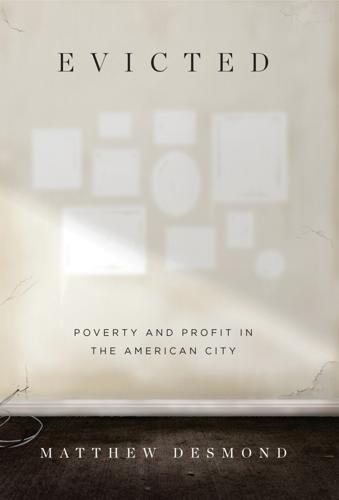
Evicted: Poverty and Profit in the American City
by
Matthew Desmond
Published 1 Mar 2016
Today in Milwaukee, former leather tanneries line the banks of the Menominee River Valley like mausoleums of the city’s golden industrial age; the Schlitz and Pabst breweries have been shuttered; and one in two working-age African American men doesn’t have a job.2 In the 1980s, Milwaukee was the epicenter of deindustrialization. In the 1990s, it would become “the epicenter of the antiwelfare crusade.” As President Clinton was fine-tuning his plan to “end welfare as we know it,” a conservative reformer by the name of Jason Turner was transforming Milwaukee into a policy experiment that captivated lawmakers around the country. Turner’s plan was dubbed Wisconsin Works (or W-2), and “works” was right: If you wanted a welfare check, you would have to work, either in the private sector or in a community job created by the state.

The Ones We've Been Waiting For: How a New Generation of Leaders Will Transform America
by
Charlotte Alter
Published 18 Feb 2020
Clinton greatly expanded the earned income tax credit—the most successful antipoverty program in a generation—which, along with a rising economy, sharply raised the incomes of the working poor. But despite some rational justifications at the time, many of the policies implemented by Clinton and his fellow boomers in the 1990s would prove to be disastrously shortsighted. The bill he signed to “end welfare as we know it” helped some welfare recipients find jobs, but cut off desperately needed cash for families stuck in deep poverty. His 1994 crime bill had a few redeeming qualities (including the assault weapons ban and the Violence Against Women Act) but ultimately accelerated the mass incarceration of a generation of young black men.

The Sovereign Individual: How to Survive and Thrive During the Collapse of the Welfare State
by
James Dale Davidson
and
William Rees-Mogg
Published 3 Feb 1997
• We explained why the 1 990s would be a decade of downsizing, including for the first time a worldwide downsizing of governments as well as business entities. 16 • We also forecast that there would be a major redefinition of terms of income redistribution, with sharp cutbacks in the level of benefits. Hints of fiscal crisis appeared from Canada to Sweden, and American politicians began to talk of "ending welfare as we know it." • We anticipated and explained why the "new world order" would prove to be a "new world disorder." Well before the atrocities in Bosnia engrossed the headlines, we warned that Yugoslavia would collapse into civil war. • Before Somalia slid into anarchy, we explained why the pending collapse of governments in Africa would lead some countries there to be effectively placed into receivership
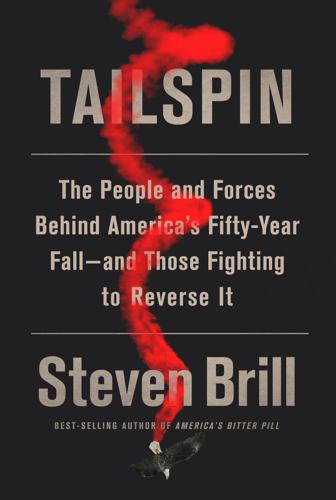
Tailspin: The People and Forces Behind America's Fifty-Year Fall--And Those Fighting to Reverse It
by
Steven Brill
Published 28 May 2018
They were almost never the “welfare queen” stereotypes whom Reagan, running a second time for president, told apocryphal stories about on the campaign trail, but they were tapping the taxpayers for billions of dollars more each year at the same time that the middle class was increasingly struggling. Neither Reagan nor his Republican successor, George H. W. Bush, was able to end Aid to Families with Dependent Children. It was Democrat Bill Clinton and Republicans in Congress who delivered on a 1992 campaign promise made by Clinton, a self-proclaimed “new Democrat,” to “end welfare as we know it.” Clinton’s plan, developed from the time he led a group of moderate Democratic governors in the 1980s, was to expand job training programs dramatically and even provide subsidized government jobs. In return, no adult or his or her family could get welfare if the adult did not take a job within a stipulated deadline.

Evil Geniuses: The Unmaking of America: A Recent History
by
Kurt Andersen
Published 14 Sep 2020
As these hearings and negotiations went on for the first eighteen months of the Clinton administration, Democrats had large majorities in both the Senate and House. The main labor union federation, the AFL-CIO, had broached the idea of a single-payer healthcare system. But the Clinton plan was the plan, and it died. In Clinton’s speech accepting the Democratic nomination in 1992, he had promised to “end welfare as we know it.” Welfare really meant one rather modest program that had been in existence since the New Deal as an add-on to the law creating Social Security. It provided a monthly cash floor to the poorest families with young children. In the 1990s fewer than 5 percent of Americans were getting those benefits, which since the beginning of the right turn in 1976 had been cut by a quarter to around $100 or $150 per family per week in today’s dollars, and which in the 1990s cost the federal government the equivalent of $18 billion a year, a fraction of one percent of the budget.
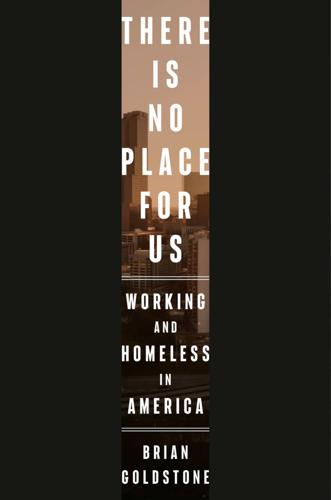
There Is No Place for Us: Working and Homeless in America
by
Brian Goldstone
Published 25 Mar 2025
Contrary to popular belief, the majority of people on welfare in the 1980s and 1990s were not trapped in an endless “cycle of dependency” but rather used the aid to rebound from temporary misfortune: job loss, a family crisis. Extensive research showed that most women who turned to cash welfare used it as a lifeline, relying on it for only brief stretches of time. But in 1996, when President Bill Clinton made good on his famous pledge to “end welfare as we know it,” that safety net was shredded. What replaced it was a program called Temporary Assistance for Needy Families. Unlike the old model, TANF gave states flexibility not only in how money was spent but in who would receive it. The program’s poor design and draconian requirements—including stringent work mandates, random drug testing, school attendance monitoring, and severe penalties for noncompliance—meant that fewer and fewer families received help.
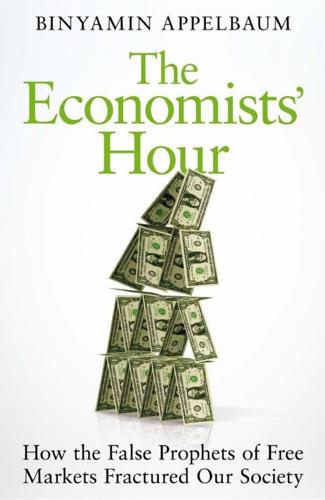
The Economists' Hour: How the False Prophets of Free Markets Fractured Our Society
by
Binyamin Appelbaum
Published 4 Sep 2019
Federal spending on human welfare declined. Indeed, the overall diminution of the government’s role in the economy obscured an even larger decline in spending to help the poor, as policy makers shifted welfare spending toward the elderly and the middle class. A milestone in that shift was Clinton’s promise to “end welfare as we know it.” Instead of providing direct aid to poor families, the federal government began to divide $16.5 billion among the states each year. More than two decades later, the sum remains the same, but inflation has eroded the value by more than a third. And America lost its edge in education. The cost of a university education in the United States is now among the highest in the developed world, and it is not a coincidence that Americans who entered their working primes in the 2010s were less likely to have college degrees than the citizens of eleven other developed nations.

The Making of Global Capitalism
by
Leo Panitch
and
Sam Gindin
Published 8 Oct 2012
Long before this argument found its place in the World Bank’s 1997 Report (discussed in the previous chapter), it had already been marginalized inside the Clinton administration.96 The balance of class forces this marginalization reflected was already registered in the defeat US labor had suffered over NAFTA at the hands of the Clinton administration, while the defeat of healthcare reform “foundered on the shoals of internal party divisions, before Republicans and mobilized conservative forces delivered the coup de grace.”97 Clinton’s subsequent initiatives to balance the budget by “ending welfare as we know it” were accompanied by the disappointment of union hopes for labor law reforms that would help undo the loss of union rights and decline in union membership; union density, which had fallen by 4 percent in the 1980s, fell by another 2 percent in the 1990s.98 While real annual income growth averaged 4 percent during what became known as “the Clinton expansion” from 1993 to 2000, the top 1 percent captured more than the bottom 80 percent of the total increase in personal income.99 The Clinton administration especially sought to integrate working-class black and Hispanic communities into mainstream housing markets as part of its goal of fostering wider access to financial services.

Before the Storm: Barry Goldwater and the Unmaking of the American Consensus
by
Rick Perlstein
Published 17 Mar 2009
The best measure of a politician’s electoral success was becoming not how successfully he could broker people’s desires, but how well he could tap their fears. This is a book, also, about how that story began. Scratch a conservative today—a think-tank bookworm at Washington’s Heritage Foundation or Milwaukee’s Bradley Foundation (the people whose studies and position papers blazed the trails for ending welfare as we know it, for the school voucher movement, for the discussion over privatizing Social Security) ; a door-knocking church lady pressing pamphlets into her neighbors’ palms about partial-birth abortion; the owner of a small or large business sitting across the table from a lobbyist plotting strategy on how to decimate corporate tax rates; an organizer of a training center for aspiring conservative activists or journalists; Republican precinct workers, fund-raisers, county chairs, state chairs, presidential candidates, congressmen, senators, even a Supreme Court justice—and the story comes out.